Keyword: cyanobacteria
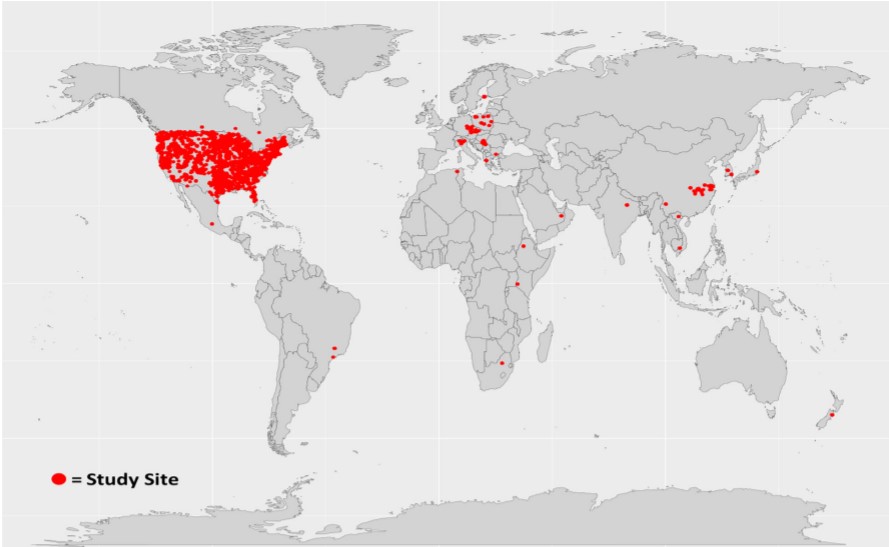
Buley, R. P., H. E. Correia, A. Abebe, T. B. Issa, and A. E. Wilson. 2021. Predicting microcystin occurrence in freshwater lakes and reservoirs: assessing environmental variables. Inland Waters 11(3):430-444.
Abstract
Determining the environmental conditions that influence the occurrence and concentration of the cyanobacterial toxin microcystin (MC) is a critical step for predicting cases in which the toxin will adversely affect drinking water sources, recreational waterbodies, and other freshwater ecosystems. Although widely studied, little consensus exists regarding the factors that influence MC on a global scale. The objective of this study was to identify the environmental variables most strongly associated with MC concentrations using observational data from lakes and reservoirs around the world while also addressing the substantial proportions of missing values that a large aggregated dataset often involves. A total of 124 studies containing data from an estimated 2040 lakes and reservoirs in 22 countries was used to construct a global dataset. Variables including <35% of non-missing observations were removed prior to analysis. Missing values for the remaining 12 predictors of MC were imputed using an iterative imputation algorithm based on a random forest approach. Variable selection was performed with generalized additive modeling on the complete case and imputed datasets. Models applied to the imputed data produced lower prediction errors than those fit to the complete dataset. Variables of greatest significance to MC concentration included location (longitude–latitude pairs), total nitrogen, turbidity, and pH. Total phosphorus was not found to be a strong predictor of MC. In addition to assisting water resource managers in protecting their waterbodies against MC, the presented methodologies may provide a useful framework for future water quality modeling while accounting for varying proportions of missing data.
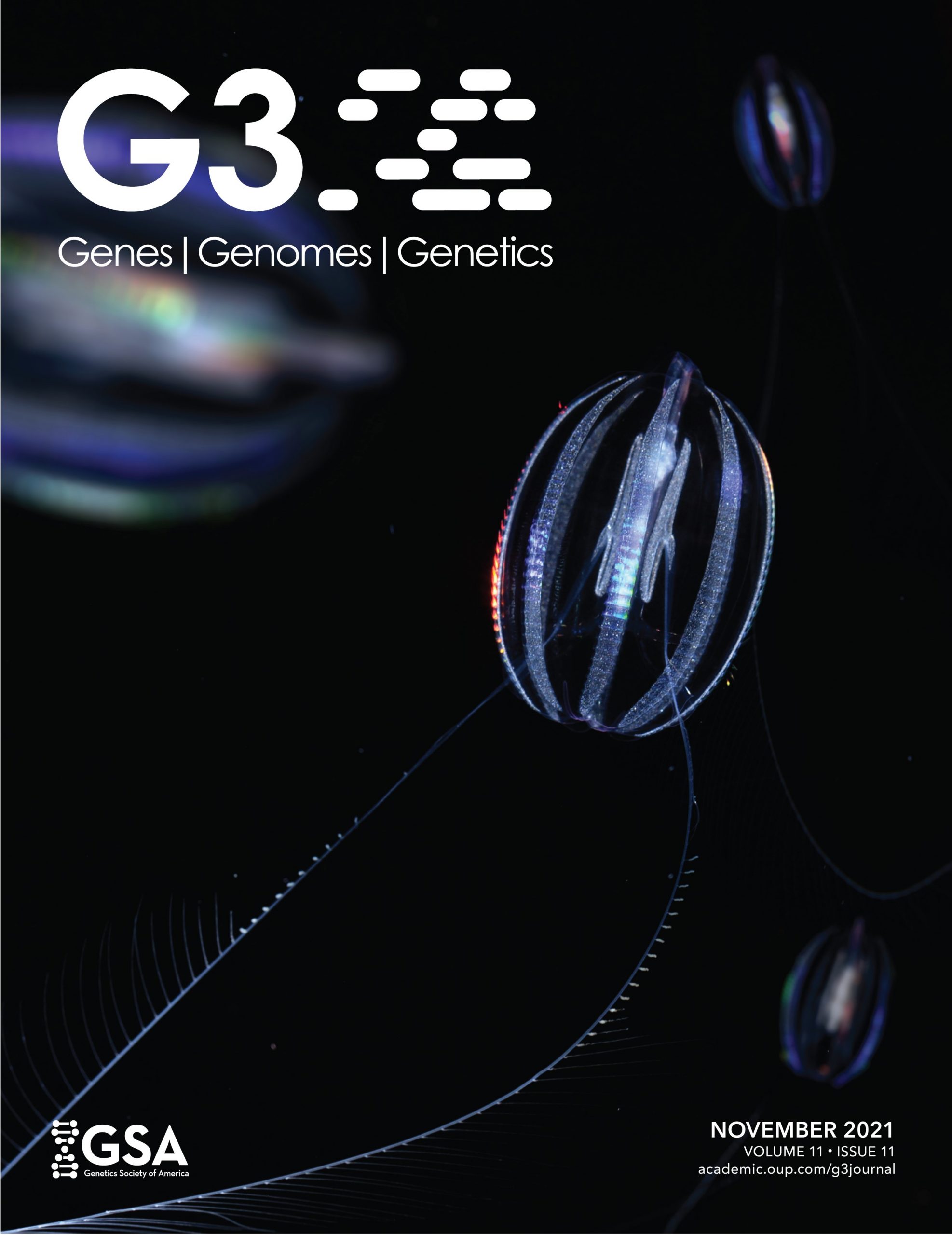
Clark, A., B. Howell, A. E. Wilson, and T. Schwartz. 2021. Draft genomes for one Microcystis-resistant and one Microcystis-sensitive strain of the water flea, Daphnia pulicaria. G3 11(11):jkab266
Abstract
Daphnia species are well-suited for studying local adaptation and evolutionary responses to stress(ors) including those caused by algal blooms. Algal blooms, characterized by an overgrowth (bloom) of cyanobacteria, are detrimental to the health of aquatic and terrestrial members of freshwater ecosystems. Some strains of Daphnia pulicaria have demonstrated resistance to toxic algae and the ability to mitigate toxic algal blooms. Understanding the genetic mechanism associated with this toxin resistance requires adequate genomic resources. Using whole-genome sequence data mapped to the Daphnia pulex reference genome (PA42), we present reference-guided draft assemblies from one tolerant and one sensitive strain of D. pulicaria, Wintergreen-6 (WI-6), and Bassett-411 (BA-411), respectively. Assessment of the draft assemblies reveal low contamination levels, and high levels (95%) of genic content. Reference scaffolds had coverage breadths of 98.9–99.4%, and average depths of 33X and 29X for BA-411 and WI-6, respectively. Within, we discuss caveats and suggestions for improving these draft assemblies. These genomic resources are presented with a goal of contributing to the resources necessary to understand the genetic mechanisms and associations of toxic prey resistance observed in this species.
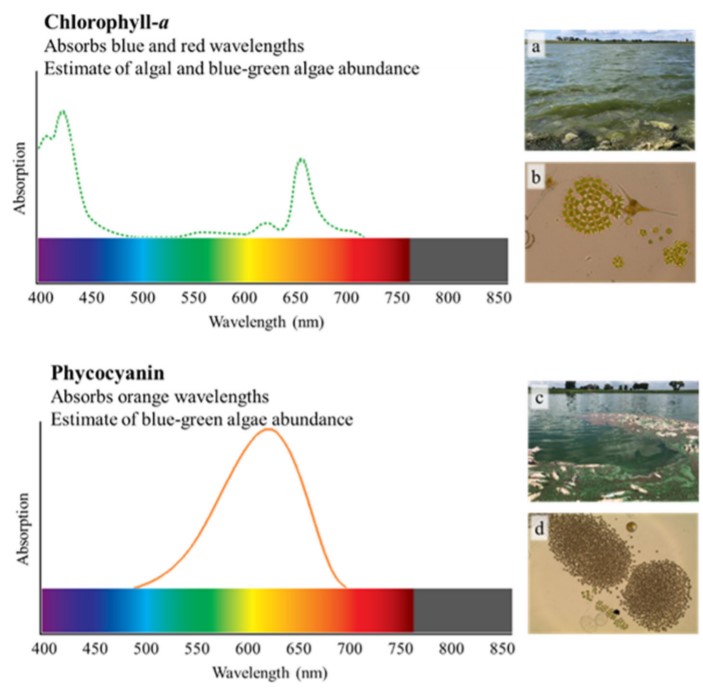
Fernandez-Figueroa, E. G., A. P. Belfiore, and A. E. Wilson. 2021. Drones for monitoring “blue-greens” in catfish aquaculture ponds. Fish Farming News 2021(1):16-17.
Abstract
Drones, unoccupied aerial vehicles, are commonly used in agriculture to determine the health of economically important crops, such as corn and wheat. Similar methods are currently being developed to measure the abundance of beneficial green algae and potentially toxic cyanobacteria, commonly called “blue-green algae”, in aquaculture ponds. While currently in the developmental stages, these methods could be instrumental in informing important management decisions. Blue-green algae thrive in aquaculture ponds throughout the southeastern US during much of the year, especially during the summer, due to the high nutrient inputs in the form of catfish feed. Blue-green algae blooms can lead to fish kills through the production of toxins (i.e., cyanotoxins) or when bacteria decompose dead organic matter leading to depleted dissolved oxygen levels. Off-flavor issues are also commonly associated with blue-green algae blooms, as some species produce compounds such as geosmin and 2-methylisoborneol (MIB) that affect the flavor and reduce the market value of catfish fillets. To mitigate the economic impacts associated with blue-green algae, aquaculture managers employ EPA-approved algaecides, such as copper sulfate, to reduce cyanobacterial abundance. While copper treatment is an effective tool for managing blue-green algae, it can also remove beneficial green algae and diatoms that make up the base of aquatic food webs, as well as other microbes, such as bacteria, that play a role in reducing ammonia and nitrite concentrations. Therefore, determining if blue-green algae concentrations are high enough to warrant chemical treatment is important for maintaining healthy pond ecosystems
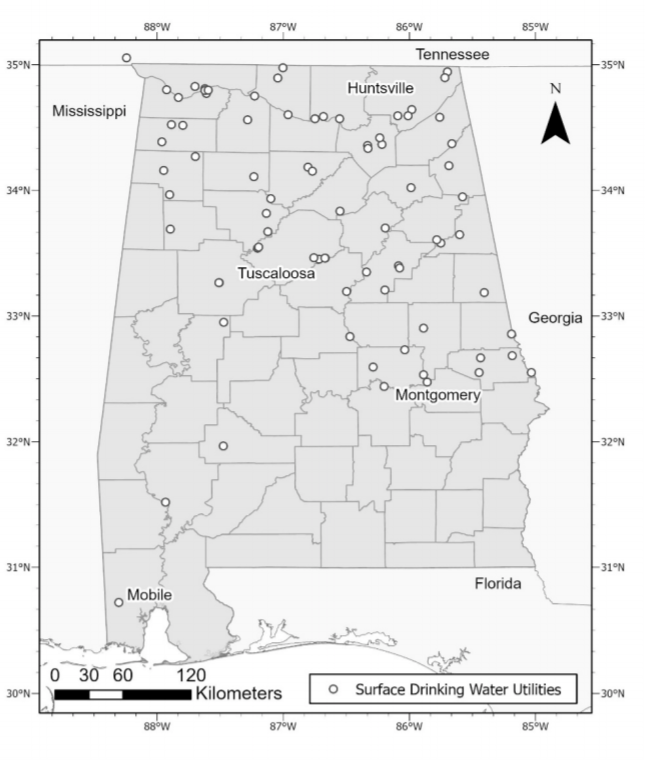
Fernandez-Figueroa, E. G., R. P. Buley, M. U.G. Barros, M. F. Gladfelter, W. D. McClimans, and A. E. Wilson. 2021. Carlson’s trophic state index is a poor predictor of cyanobacterial dominance in drinking water reservoirs. AWWA Water Science 3(2):e1219.
Abstract
A 20-month survey of 71 surface drinking water utilities across 44 waterbodies was conducted to determine whether the commonly used Trophic State Index (TSI) is a reliable indicator of eutrophication in drinking water sources. Raw water quality results showed that cyanobacteria, cyanotoxins (i.e., microcystin), and taste and odor (T&O) compounds (i.e., 2-methylisoborneol and geosmin) were generally low in the utilities sampled. TSI values based on chlorophyll concentrations (TSI Chl-a) were closely related to phytoplankton, cyanotoxin, and T&O concentrations and indicated that most drinking water sources were mesotrophic or eutrophic. However, TSI values based on total phosphorus (TSI TP) indicated that the drinking water sources were eutrophic or hypereutrophic. These results suggest that TSI Chl-a is a better predictor of cyanobacteria and their compounds than TSI TP. Phytoplankton abundance decreased with depth; therefore, managers should consider switching to deeper intakes when TSI Chl-a values increase to reduce removal costs.
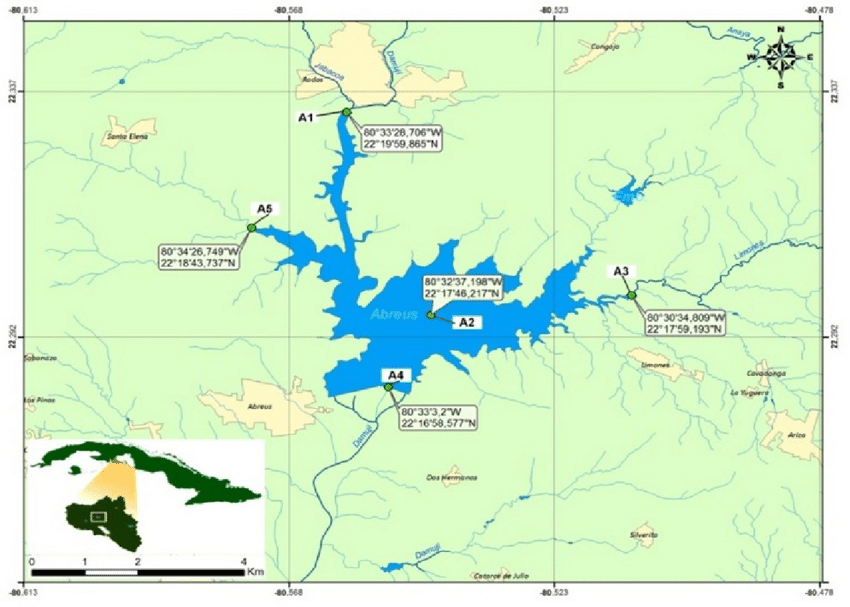
Valle-Pombrol, A., A. Comas-Gonzalez, D. Castro-Rodriguez, A. Garcia-Moya, and A. E. Wilson. 2021. Planktonic cyanobacteria from the Abreus Reservoir, Cienfuegos, Cuba. Pan-American Journal of Aquatic Sciences 16(1):20-29.
Abstract
The study of the cyanobacteria that make up the phytoplankton community of reservoirs is very important due to the production of toxins by some phytoplankton taxa. The composition and abundance of cyanobacteria and their relationship to physicochemical variables was determined during six months (March, April, June, September, November and December) in 2018 at five stations in the Abreus Reservoir, which is located in the south center of the Cienfuegos province (Cuba). Eleven new taxa were observed in the reservoir grouped into seven families, 14 genera, and 34 species. The toxigenic genera Microcystis and Raphidiopsis were observed at all collection points throughout the year, presenting a potentially persistent toxicity threat in this reservoir. Semi-accumulative blooms were reported in September. Microcystis sp. and Raphidiopsis sp. were the most abundant genera during observed blooms. The abundance of some cyanobacterial genera, including Microcystis, Aphanocapsa, Raphidiopsis and Dolichospermum, were strongly correlated with water temperature and transparency. Microcystin values are reported for the first time in Abreus Reservoir.
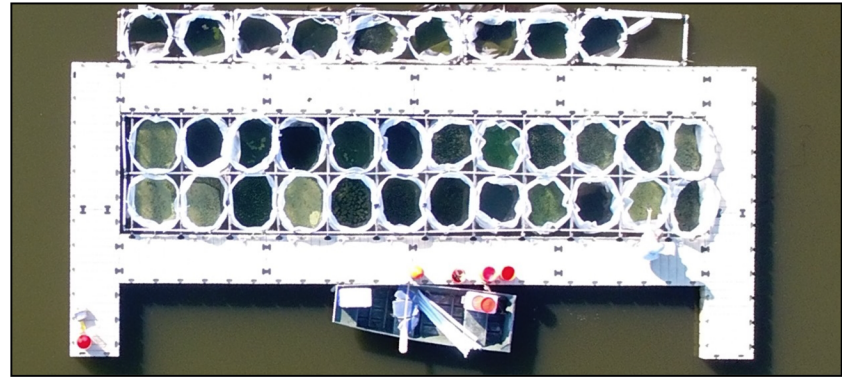
Buley, R. P., C. Adams, A. P. Belfiore, E. G. Fernandez-Figueroa, M. F. Gladfelter, B. Garner, D. L. Straus, and A. E. Wilson. 2021. Field evaluation of seven products to control cyanobacterial blooms in aquaculture. Environmental Science and Pollution Research 28:29971-29983.
Abstract
Harmful algal blooms negatively impact water quality in hypereutrophic systems that are common in aquaculture. However, few algaecides are approved for use in food-fish aquaculture. This study assessed the effectiveness of seven products, including hydrogen peroxide (as a concentrated liquid or in granular form (PAK-27)), peracetic acid (as VigorOx SP-15 and Peraclean), copper (as copper sulfate in unchelated (powder) or chelated (Captain) forms), and a clay-based product (as Phoslock) on phytoplankton (including cyanobacteria) and zooplankton biomass. Each product was tested in a 14-day laboratory and 35- day field experiment to assess their short- and long-term performance. Although some products (i.e., copper-based and liquid hydrogen peroxide) quickly reduced phytoplankton, effects were short-lived given that chlorophyll concentrations returned to starting concentrations within 21 days. In contrast, all but one product (i.e., concentrated liquid hydrogen peroxide) maintained low phycocyanin concentrations for 35 days. Zooplankton biomass trends showed large, negative effects for most algaecides; however, zooplankton rebounded for most treatments except for copper-based products. In general, copper-based products remain the most efficient and cheapest choice to reduce total phytoplankton biomass in aquaculture systems. However, peracetic acid-based products effectively and quickly reduced cyanobacteria while having marginal effects on beneficial algae and zooplankton. Such algaecides could be effective alternatives to copper-based products for aquaculture farmers. Hydrogen peroxide . Peracetic acid . Copper . Clay . Harmful algal blooms . Chemical control
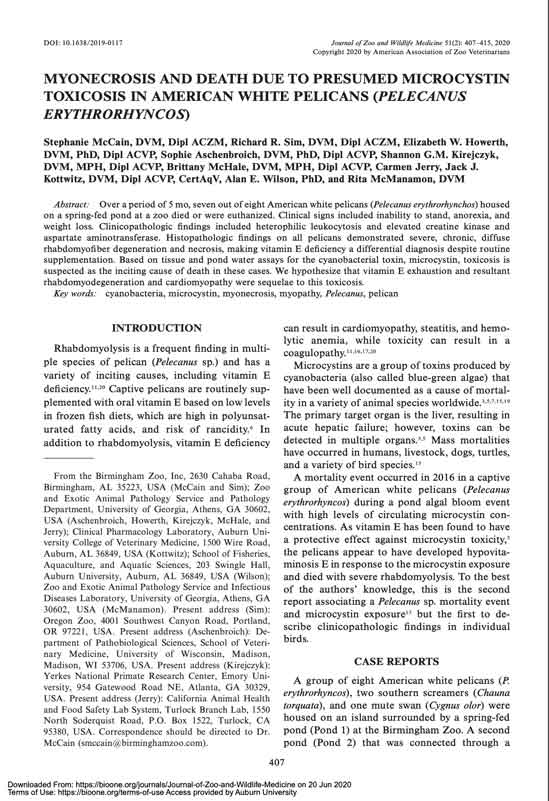
McCain, S., R. R. Sim, E. W. Howerth, S. Aschenbroich, S. G.M. Kirejczyk, B. McHale, C. Jerry, J. J. Kottwitz, A. E. Wilson, and R. McManamon. 2020. Myonecrosis and death due to presumed microcystin toxicosis in American white pelicans (Pelecanus erythrorhyncos). Journal of Zoo and Wildlife Medicine 51(2):407-415.
Abstract
Over a period of 5 mo, seven out of eight American white pelicans (Pelecanus erythrorhynchos) housed on a spring-fed pond at a zoo died or were euthanized. Clinical signs included inability to stand, anorexia, and weight loss. Clinicopathologic findings included heterophilic leukocytosis and elevated creatine kinase and aspartate aminotransferase. Histopathologic findings on all pelicans demonstrated severe, chronic, diffuse rhabdomyofiber degeneration and necrosis, making vitamin E deficiency a differential diagnosis despite routine supplementation. Based on tissue and pond water assays for the cyanobacterial toxin, microcystin, toxicosis is suspected as the inciting cause of death in these cases. We hypothesize that vitamin E exhaustion and resultant rhabdomyodegeneration and cardiomyopathy were sequelae to this toxicosis.

Buley, R. P., Z. Yang, M. F. Gladfelter, and A. E. Wilson. 2019. Controlling blue-green algal blooms in aquaculture ponds using hydrogen peroxide. Fish Farming News 2019(1):3-5.
Abstract
Excessive blue-green algae (i.e., cyanobacteria) can harm aquatic organisms, including farmed fish. Although algal populations may be beneficial as they acquire excess nutrients, including potentially toxic forms such as nitrite and ammonia, and produce oxygen through photosynthesis, large algal blooms may lead to anoxia as decaying cells are decomposed by bacteria. In addition, some select strains of blue-green algae may produce chemicals that harm fish health (e.g., microcystins, nodularins) or cause fish filets to taste muddy (i.e., geosmin, 2- methylisoborneol). Both situations can cause significant economic losses to fish farmers around the world.
As our understanding of nuisance algal blooms continues to grow, so too do the means to combat these events. Developed methods can often be placed into the groupings of chemical, biological, and physical controls. Of these, chemical controls have been used to great effect; however, there is concern that some approved algaecides may persist in the environment for extended periods of time and, in certain situations, are too broad-spectrum in their toxicity to be practical. Consequently, alternative chemicals are actively being researched. And, although many algaecides exist, hydrogen peroxide (H2O2) has proved quite effective at reducing blue-green algae (Kay et al. 1982), and is currently an approved FDA
aquaculture drug (FDA 2007). This contribution assesses the utility of H2O2 as an algaecide, its application rate, and other factors which may impede its effectiveness.

Chislock, M. F., R. B. Kaul, K. A. Durham, O. Sarnelle, and A. E. Wilson. 2019. Eutrophication mediates rapid clonal evolution in Daphnia pulicaria. Freshwater Biology 64:1275-1283.
Abstract
- Laboratory studies have revealed that Daphnia species can evolve to tolerate toxic cyanobacteria in the diet. Specifically, Daphnia from eutrophic lakes where cyanobacteria are common tend to have higher growth rates and survival when fed toxic cyanobacteria than populations from oligotrophic environments with low abundance of cyanobacteria.
- We conducted an in‐lake mesocosm (i.e. limnocorral) experiment during the autumn of 2009 to assess the effects of nutrient enrichment on clonal evolution in Daphnia pulicaria. As nutrient enrichment often favours grazing‐resistant cyanobacteria, we hypothesised that fertilisation would influence the genotypic composition of D. pulicaria that vary in tolerance to cyanobacteria. Mesocosms were fertilised to manipulate phytoplankton and cyanobacterial abundance and concentrations of a cyanobacterial toxin (microcystin). Thus, half of the mesocosms were high‐nutrient and half were low‐nutrient. We then stocked half of the mesocosms with a mixture of six genetically‐distinct D. pulicaria genotypes (three genotypes from oligotrophic lakes and three from eutrophic lakes) leaving half of the mesocosms Daphnia‐free to assess grazing effects, using a fully factorial design.
- When compared to the low nutrient treatment, high nutrient mesocosms had nearly five‐fold higher chlorophyll a concentrations, eight‐fold higher cyanobacterial dry biomass, and three‐fold higher microcystin levels at the start of the experiment. In contrast, low nutrient mesocosms had phytoplankton concentrations typical of mesotrophic lakes.
- Fertilisation strongly affected Daphnia genetic diversity in the mesocosms. Final Daphnia genotype diversity in the mesocosms with low‐cyanobacteria (richness = 5.83, Shannon–Weiner index = 1.55, evenness = 0.88) was similar to the initial stocked diversity (richness = 5.50, Shannon–Weiner index = 1.48, evenness = 0.87). In contrast, final diversity in fertilised mesocosms with high cyanobacteria was greatly reduced (richness = 2, Shannon–Weiner index = 0.17), with one Daphnia genotype that originated from the most‐eutrophic lake being highly dominant (evenness = 0.25). Thus, eutrophication mediated strong clonal selection of a cyanobacteria‐tolerant Daphnia genotype over just 10 weeks.
- By the end of the experiment, Daphnia significantly reduced phytoplankton biomass in the high‐nutrient, but not in the low‐nutrient treatment. This difference in effect size was largely driven by the five‐fold higher initial phytoplankton biomass in the high‐nutrient treatment. Thus, the ability of Daphnia to reduce phytoplankton biomass in eutrophic lakes may be driven more so by the abundance of planktivorous fishes, as opposed to the prevalence of cyanobacteria and their associated toxins.
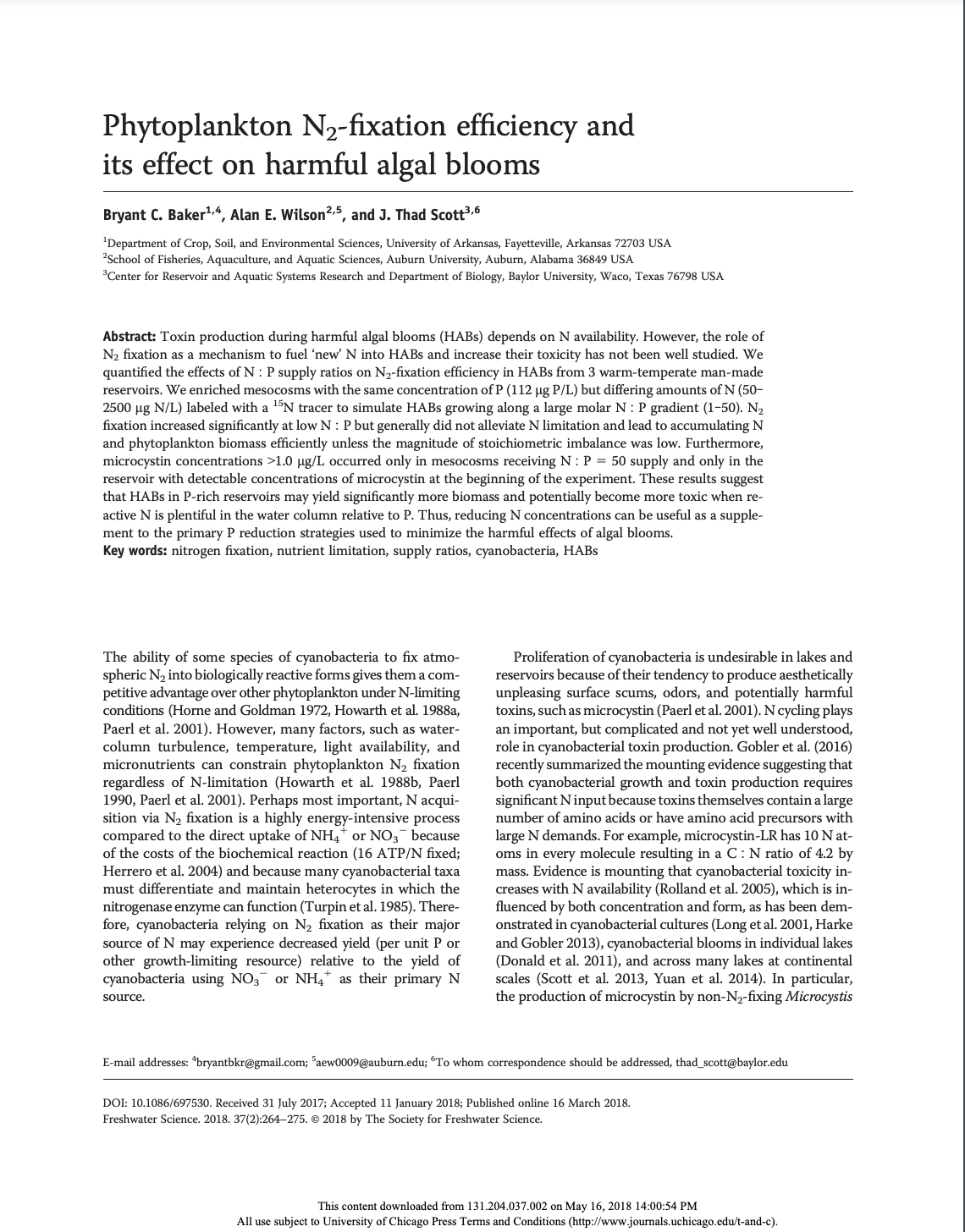
Baker, B. C., A. E. Wilson, and J. T. Scott. 2018. Phytoplankton N2 fixation efficiency and its effect on harmful algal blooms. Freshwater Science 37(2):264-275.
Abstract
Toxin production during harmful algal blooms (HABs) depends on N availability. However, the role of N2 fixation as a mechanism to fuel ‘new’ N into HABs and increase their toxicity has not been well studied. We quantified the effects of N∶P supply ratios on N2-fixation efficiency in HABs from 3 warm-temperate man-made reservoirs. We enriched mesocosms with the same concentration of P (112 µg P/L) but differing amounts of N (50‒2500 µg N/L) labeled with a 15N tracer to simulate HABs growing along a large molar N∶P gradient (1‒50). N2 fixation increased significantly at low N∶P but generally did not alleviate N limitation and lead to accumulating N and phytoplankton biomass efficiently unless the magnitude of stoichiometric imbalance was low. Furthermore, microcystin concentrations >1.0 µg/L occurred only in mesocosms receiving N∶P = 50 supply and only in the reservoir with detectable concentrations of microcystin at the beginning of the experiment. These results suggest that HABs in P-rich reservoirs may yield significantly more biomass and potentially become more toxic when reactive N is plentiful in the water column relative to P. Thus, reducing N concentrations can be useful as a supplement to the primary P reduction strategies used to minimize the harmful effects of algal blooms.